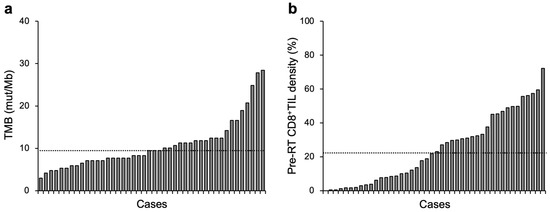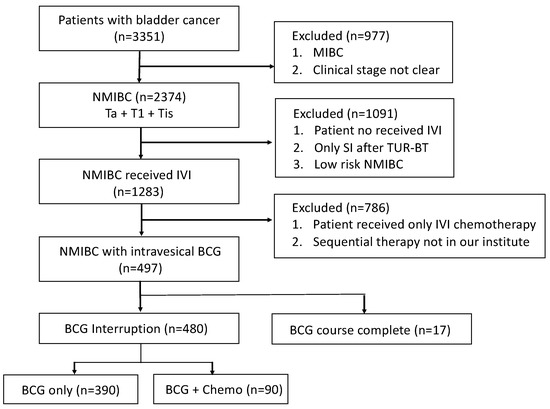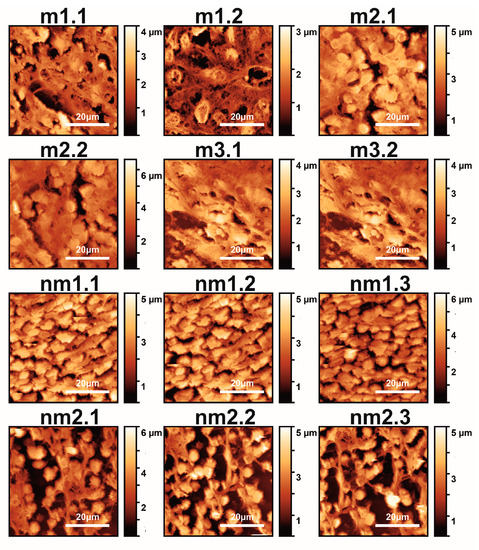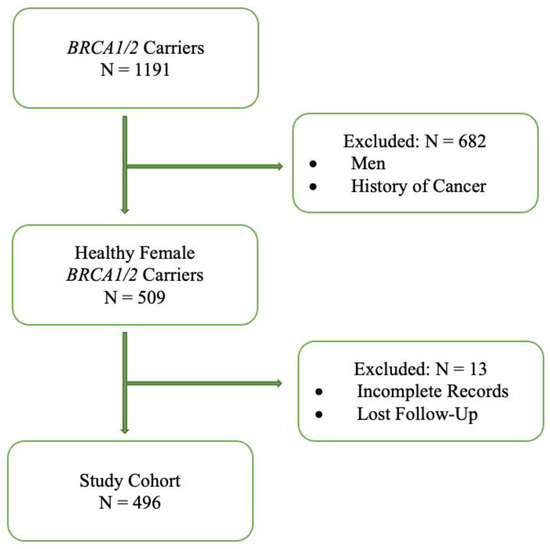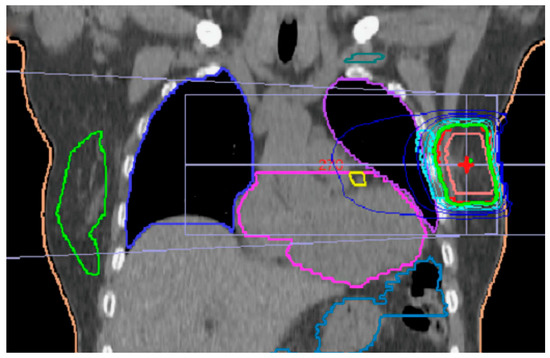Cancers 2023, 15(4), 1210; https://doi.org/10.3390/cancers15041210 - 14 Feb 2023
Cited by 4 | Viewed by 2390
Abstract
Background: Tumor mutational burden (TMB) and stromal CD8-positive tumor-infiltrating lymphocytes (CD8+TILs) serve important roles in antitumor immune responses to radiotherapy. This study aimed to elucidate the association between TMB, CD8+TILs, and clinical factors in patients with cervical cancer treated
[...] Read more.
Background: Tumor mutational burden (TMB) and stromal CD8-positive tumor-infiltrating lymphocytes (CD8+TILs) serve important roles in antitumor immune responses to radiotherapy. This study aimed to elucidate the association between TMB, CD8+TILs, and clinical factors in patients with cervical cancer treated with radiotherapy. Methods: Patients with squamous cell carcinoma of the uterine cervix treated with definitive radiotherapy, and with available somatic mutation data and immunohistochemical staining data from identical tumor tissues, were enrolled retrospectively. The association between TMB and/or CD8+TIL density and patient characteristics, mutation profiles, and treatment outcome was analyzed. Results: The study analyzed 44 patients (median follow-up period, 61 months). There was no significant correlation between TMB and CD8+TIL density, or between TMB or CD8+TIL density and patient characteristics. TMB-high or CD8+TIL density-low status was associated with worse overall survival and distant metastasis-free survival; the predictive value of these factors became greater when used in combination. TMB-high or CD8+TIL density-high status was associated with ARID1A mutations. Conclusions: These data indicate independence of TMB and CD8+TIL density and the involvement of ARID1A alterations in antitumor immune responses in patients with cervical cancers treated with radiotherapy, warranting further mechanistic research and prospective validation.
Full article
(This article belongs to the Special Issue The Development of Effective Therapy Targeting the Microenvironment of Cancer)
►
Show Figures
